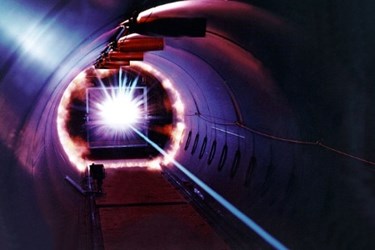Laser-Activated Nanoparticles Deliver Proteins Inside Cancer Cells
By Chuck Seegert, Ph.D.

Using surface tags specific to prostate cancer cells, researchers were able to shepherd protein-loaded gold nanoparticles into the cancer cells. Once inside the cells, the protein-laden nanoparticles were induced to release their cargo with laser pulses aimed at single cells. The method is as specific as intra-cellular microinjection and enables spatial and temporal control of protein release at the single-cell level.
The delivery of genetic materials is a well studied part of molecular biology. There are very few options, however, for transporting much larger molecules, like proteins, into the cytosolic space, where they can perform their functions. Delivery of genetic material is integral for gene therapies and other methods of dealing with disease. Improving protein delivery capabilities could have a similar impact on medical devices that assist with large molecule therapeutics.
Recently, researchers from the University of California at Santa Barbara (UCSB) have developed a method with extremely precise temporal and spatial resolution, according to a recent article from the UC Santa Barbara Current. The new approach uses hollow gold nanoparticles that have had their surfaces modified with a short protein chain called a C-end rule internalizing peptide. Receptors specific to this peptide are found on the outer surface of prostate cancer cells, and when the receptors sense the peptide, they induce the cell to enfold the nanoparticle.
Once the nanoparticles are endocytosed, or enfolded into the cancer cells, they need to release their cargo, according to a recent study published by the team in Molecular Pharmaceutics. As part of the endocytosis process, the nanoparticles and their cargo are surrounded by a sphere of cell membrane and separated from the rest of the cell. Exposure to a pulsed femtosecond infrared laser causes the nanoparticle to pop, rupturing the vesicle, and releasing the proteins. There, the proteins have access to the interior of the cell where they can target intracellular organelles. As a proof-of-concept, the team used a green fluorescent protein that caused the cells to fluoresce when the protein was released.
“When we excite these hollow gold nanoshells with light, the surface of the nanoparticle becomes somewhat hot,” said graduate student and lead author Demosthenes Morales, in the article. “The light not only releases the cargo that’s on the surface but also causes the formation of vapor bubbles, which expand and eventually pop the vesicle, allowing for endosome escape.”
Proteins more relevant to cancer research were also tested in the model including, Sox2 and p53, according to the study. The precision of the laser allowed individual cells to be singled out, which is a goal often seen with more labor-intensive methods like microinjection.
While the delivery of nanoparticles to targeted tissues is advancing, other areas of science that may enable the delivery of light to deep tissues are being explored. Recently, in an article published on Med Device Online, a technology that focuses light into deep tissue regions was discussed.
